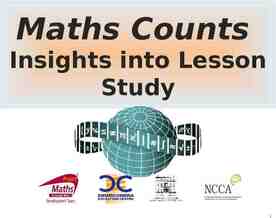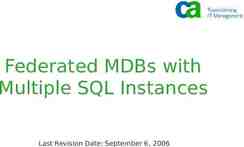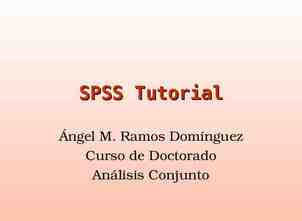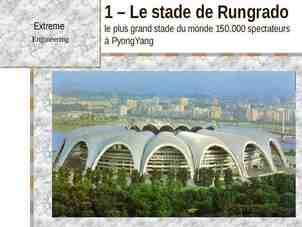Municipal Redistricting in 2021: New Rules of the Road A Presentation
26 Slides817.34 KB

Municipal Redistricting in 2021: New Rules of the Road A Presentation for the Municipal Law Institute Chris Skinnell Sean Welch Douglas Johnson, Ph.D. Nielsen Merksamer Nielsen Merksamer National Demographics Corp. March 6, 2020 Municipal Redistricting in California in 2021: New Rules of the Road 1

Redistricting in 2021 Under New California Rules and Federal Case Law Redistricting will be different this time around. An outline of what to expect: – Developments in federal case law – AB 849: new legislation that completely rewrites the state law rules governing the redistricting process, beginning in 2020 – Practical considerations for city officials tasked with redrawing the lines Municipal Redistricting in California in 2021: New Rules of the Road 2

Federal Law Considerations Population Equality Voting Rights Act Equal Protection/Restrictions on Racial Gerrymandering Municipal Redistricting in California in 2021: New Rules of the Road 3

Drawing the Lines—Legal Considerations: Population Equality – Overriding criterion is total population equality, see Reynolds v. Sims, 377 U.S. 533 (1964). – Unlike congressional districts, local electoral districts do not require perfect equality—some deviation acceptable to serve valid governmental interests. – Total deviation less than 10% presumptively constitutional. (Caution: the presumption can be overcome!) Municipal Redistricting in California in 2021: New Rules of the Road 4

Population Equality: What’s Changed? As a matter of federal law, some clarification on population base, but questions remain. – Evenwel v. Abbott, 136 S. Ct. 1120 (2016) – Burns v. Richardson, 384 U.S. 73 (1966) As a matter of state law, total population is mandatory, except that incarcerated persons only count in specified circumstances. See Elec. Code §§ 21500(a), 21601(a) & 21621(a) Municipal Redistricting in California in 2021: New Rules of the Road 5

Drawing the Lines—Legal Considerations: Federal VRA – Section 2 of the federal Voting Rights Act prohibits electoral systems (including district plans), which dilute racial and language minority voting rights by denying them an equal opportunity to nominate and elect candidates of their choice. – “Language minorities” are specifically defined in federal law: to mean persons of American Indian, Asian American, Alaskan Natives or Spanish heritage. CVRA expressly adopts the definition of “language minority.” – Creation of minority districts required only if the minority group can form the majority in a single member district that otherwise complies with the law. Bartlett v. Strickland, 556 U.S. 1 (2009). Municipal Redistricting in California in 2021: New Rules of the Road 6

Packing Voting Rights Act “‘Packing’ refers to the practice of filling a district with a supermajority of a given group or party. ‘Cracking’ involves the splitting of a group or party among several districts to deny that group or party a majority in any of those districts.” -Vieth v. Jubelirer, 541 U.S. 267, 286 n.7 (2004) Municipal Redistricting in California in 2021: New Rules of the Road District 4 Minority Voters District 1 Minority Voters District 2 District 3 Cracking Minority Voters District 1 Minority Voters District 2 District 4 District 3 7

Voting Rights Act: What’s Changed? Section 5 invalidated. – Shelby County v. Holder, 570 U.S. 529 (2013). Move to reduce minority-majority percentages— increased focus on “packing” claims. – Relates to racial gerrymandering developments, discussed below Municipal Redistricting in California in 2021: New Rules of the Road 8

Drawing the Lines—Legal Considerations: No Gerrymandering The Fourteenth Amendment restricts the use of race as the “predominant” criterion in drawing districts and the subordination of other considerations. Shaw v. Reno, 509 U.S. 630 (1993); Miller v. Johnson, 515 U.S. 900 (1995). – Such predominant use must be justified as narrowly tailored to fulfill a compelling state interest – i.e., strict scrutiny Looks matter! Bizarrely shaped electoral districts can be evidence that racial considerations predominate. (See, e.g., North Carolina CD 12, which stretched 160 miles across the central part of the State, for part of its length no wider than the freeway right-of-way.) But bizarre shape is not required for racial considerations to “predominate.” Fourteenth Amendment does not, however, prohibit all consideration of race in redistricting. Easley v. Cromartie, 532 U.S. 234 (2001). – Focus on communities of interest. Municipal Redistricting in California in 2021: New Rules of the Road 9

No Gerrymandering: What’s Changed? Lots – Ala. Legis. Black Caucus v. Alabama, 135 S. Ct. 1257 (2015) – Harris v. Ariz. Indep. Redistricting Comm’n, 136 S. Ct. 1301 (2016) – Bethune-Hill v. Va. State Bd. of Elections, 137 S. Ct. 788 (2017) – Cooper v. Harris, 137 S. Ct. 1455 (2017) – Abbott v. Perez, 138 S. Ct. 2305 (2018) – North Carolina v. Covington, 138 S. Ct. 2548 (2018) Municipal Redistricting in California in 2021: New Rules of the Road 10

Drawing the Lines—Legal Considerations: State Law Criteria In the following order of priority: – (1) To the extent practicable, council districts shall be geographically contiguous. Areas that meet only at the points of adjoining corners are not contiguous. Areas that are separated by water and not connected by a bridge, tunnel, or regular ferry service are not contiguous. – (2) To the extent practicable, the geographic integrity of any local neighborhood or local community of interest shall be respected in a manner that minimizes its division. A “community of interest” is a population that shares common social or economic interests that should be included within a single district for purposes of its effective and fair representation. Communities of interest do not include relationships with political parties, incumbents, or political candidates. Municipal Redistricting in California in 2021: New Rules of the Road 11

Drawing the Lines—Legal Considerations: State Law Criteria In the following order of priority (continued): – (3) Council district boundaries should be easily identifiable and understandable by residents. To the extent practicable, council districts shall be bounded by natural and artificial barriers, by streets, or by the boundaries of the city. – (4) To the extent practicable, and where it does not conflict with the preceding criteria in this subdivision, council districts shall be drawn to encourage geographical compactness in a manner that nearby areas of population are not bypassed in favor of more distant populations. Districts “shall not adopt boundaries for the purpose of favoring or discriminating against a political party.” Municipal Redistricting in California in 2021: New Rules of the Road 12

State Law Criteria: What’s Changed? Lots – Other than equal population, Voting Rights Act, and equal protection, criteria were formerly discretionary and permissive (the board or council “may” consider the others). Now appear mandatory. – Criteria now ranked in order of priority. – No longer clear the extent to which non-statutory criteria can be considered. – Consideration of incumbency and political parties now restricted. – Explicitly made applicable to charter cities. Constitutional issues? (Pending AB1276 change) – Exclusion of prisoners previously a policy choice; not now. – Note: school districts and special districts remain under old rules. – Mid-decade redistricting previously allowed; now only under specific circumstances. Municipal Redistricting in California in 2021: New Rules of the Road 13

Traditional Policy Decisions Now in Doubt Local Redistricting in California in 2021: The Same, But Different 14

Non-Statutory Criteria Ability to consider is unclear: Respect will of the voters / avoid head-to-head contests – NDC estimates 20 to 50 Councilmembers are going to be forced into head-tohead contests, or unable to run for re-election at all, due to the new criteria (including many of our post-CVRA newly elected Asian-American and Latino Councilmembers) Minimize shifting voters from one election year to another – Voters currently in districts scheduled to vote in 2022 could be redistricted into a 2024 district, meaning there would be a six year gap between their voting in Council elections Local Redistricting in California in 2021: The Same, But Different 15

Drawing the Lines—Legal Considerations: State Law Process Timing: – THEN: before the first day of November of the year following the year in which each decennial federal census is taken – NOW: no earlier than August 1, 2021, and August 1 in each year ending in the number one thereafter, but no later than 151 days before the jurisdiction’s next regular election occurring after March 1, 2022, and after March 1 in each year ending in the number two thereafter. – Charter cities can set their own timing – Timing for cities with March elections compressed Municipal Redistricting in California in 2021: New Rules of the Road 16

Schedule Congestion 2011: 150 to 200 jurisdictions had to redistrict – Many had off-year (2011/2013) elections, and redistricted in 2012 2021: about 500! – Almost all off-year elections have been eliminated, so virtually everyone will redistrict in 2021 This will be a massive workload increase for the County Registrars who receive and implement all the redistricting maps, and for the attorneys and demographers who assist jurisdictions with this process Local Redistricting in California in 2021: The Same, But Different 17

Drawing the Lines—Legal Considerations: State Law Process Backup Procedure if Deadline Missed: – THEN: default to at-large elections for general law cities – NOW: petition to the superior court, which may use special masters and experts at the expense of the jurisdiction, and local facilities, computers and personnel – Charter cities are permitted to have their own default procedures Municipal Redistricting in California in 2021: New Rules of the Road 18

Drawing the Lines—Legal Considerations: State Law Process Hearings: – THEN: one public hearing on the proposal prior to the public hearing at which the city council votes to approve or defeat the proposal. – NOW: at least four public hearings: at least one before draft maps are drawn (and can be conducted by staff or consultant); at least two after draft maps are drawn; at least one on a Saturday, Sunday or after 6:00 P.M. Monday through Friday Municipal Redistricting in California in 2021: New Rules of the Road 19

Drawing the Lines—Legal Considerations: State Law Process Public Outreach – THEN: None in particular required, except compliance with Brown Act – NOW: jurisdiction must encourage public participation through Media outreach Good government, civil rights, civic engagement & community groups Live translation, if requested 72 hours in advance of meeting Publication of notices on the internet Publication of a draft map at least seven days before adoption Publication of relevant demographic data Receipt of maps or testimony from the public in writing or electronically Municipal Redistricting in California in 2021: New Rules of the Road 20

Drawing the Lines—Legal Considerations: State Law Process Recordkeeping THEN: None in particular required, except compliance with Public Records Act NOW: record of each public comment and governing body deliberations at every public hearing or workshop – made available to the public within two weeks – Internet webpage maintained for 10 years in multiple languages that includes: An explanation of the redistricting process Procedures for testifying or submitting written testimony Calendar of all hearings and workshops Notice and agenda for each hearing and workshop Recording or written summary of each hearing and workshop All draft maps & adopted map Secretary of State to provide template Municipal Redistricting in California in 2021: New Rules of the Road 21

Drawing the Lines—Legal Considerations: State Law Process Mid-Decade Redistricting – THEN: At any time, based on a mid-decade Census or population estimates prepared by the State Department of Finance – NOW: Never, unless in conjunction with judicial proceedings, or jurisdictional boundary changes, and then with qualifications – Charter cities can have different rules pertaining to mid-decade redistricting Municipal Redistricting in California in 2021: New Rules of the Road 22

Drawing the Lines—Legal Considerations: State Law Process There are other options for cities and counties – – A variety of redistricting commissions, including an advisory commission (specifically referenced in AB 849), a hybrid commission, or an independent commission Commissions mandatory for Los Angeles and San Diego County Boards of Supervisors – Note: numerous restrictive qualifications for appointment as commissioner – Note: specific limitations on subsequently political activities of commissioners Municipal Redistricting in California in 2021: New Rules of the Road 23

Commission Pressure & Risks Commissions More Popular in 2021 Advisory or Independent Commissions may limit the negative impact on Council dynamics if the new state criteria force Councilmembers together We anticipate considerable public pressure for “independent commissions,” especially in the Bay Area – Independent Commissions have an added requirement: “The commission shall not draw districts for the purpose of favoring or discriminating against an incumbent or political candidate.” [Elections Code Section 23003(g)] Local Redistricting in California in 2021: The Same, But Different 24

Question Time Municipal Redistricting in California in 2021: New Rules of the Road 25

Municipal Redistricting in 2021: New Rules of the Road A Presentation for the Municipal Law Institute Chris Skinnell Sean Welch Douglas Johnson, Ph.D. Nielsen Merksamer Nielsen Merksamer National Demographics Corp. March 6, 2020 Municipal Redistricting in California in 2021: New Rules of the Road 1






